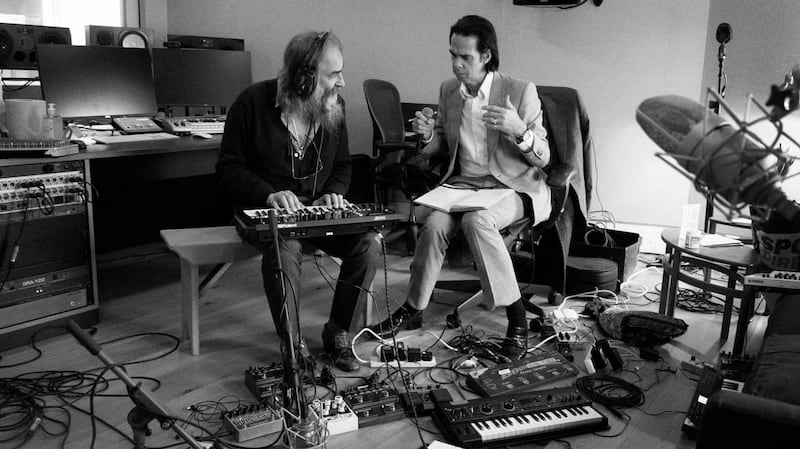The film (by Marie Amiguet and Vincent Munier) that this soundtrack accompanies is essentially about hidden, mysterious and shape-shifting nature. Munier, one of the world’s most renowned wildlife photographers, takes novelist Sylvain Tesson with him to the Tibetan highlands, a terrain they explore over several weeks.
The film moved Ellis so much that he felt he “wanted to do whatever it took” to compose an original score, asking Cave if he might come in for a day – “he saw the film and stayed for four”. The result is an elegant, layered and affecting collaboration, a piece of work that allows for both space and nuance to create something quite philosophical and spiritual, as searching in impulse as the documentary itself.
A haunting atmosphere hangs over every piece, conjuring something alchemical that perhaps only the natural world can inspire, with Ellis and Cave clearly exploring tension – the conflicts present between the human and the natural world, and the watched and the watcher. L’attaque des Loups frames everything – with Ellis’s violin so emblematic of the ever-moving mystery of nature, dipping and dropping before soaring skywards. The gorgeous We Are Not Alone hears Cave’s crumpled baritone extoll “I was observed and unaware” – perhaps placing himself alongside some of the wildlife Munier seeks to find. That sentiment comes up again in the glitchy, minimalist Les Cerfs, amid radiant, elegant piano, and there are meditative whispers of “Where are you? Where are you?” that permeate the prayerful antelope.

There are many playful moments amid the prayerful, as on the transporting La Bête, and there is a tender delicacy to something like Des Affûts Elliptiques or Les Nomades. The measured piano melody on La Grotte marries beautifully with the violin’s, wrapping itself around it before drifting out, complementing something like Les Princes, and its lilting grace.
Les Yaks’ strings take on a menacing, but mesmerising quality, and La Neige Tombe glows in beauty, where the violin is simply its own voice, searching through the wilderness. Les Ours hears Cave in hushed tones – suggesting a tentativeness, of not wanting to displace what has been there for so long. This suggestion weaves throughout the record, morphing into a kind of sonic sparseness, an acknowledgement that we are, in fact, interlopers on this planet of ours. The interplay between permanence and impermanence is deftly drawn, culminating in the final two pieces, Un Être Vous Obsède and L’apparition: We Are Not Alone – wistful but optimistic – bringing to mind all that we have lost, and all that will remain, with nature as our greatest teacher.










